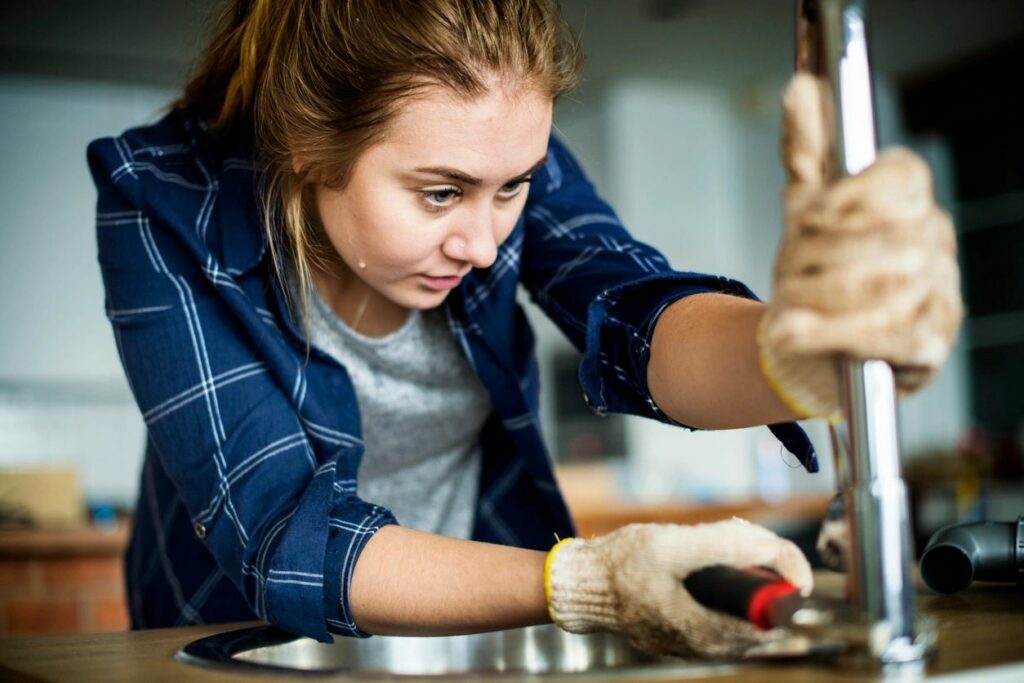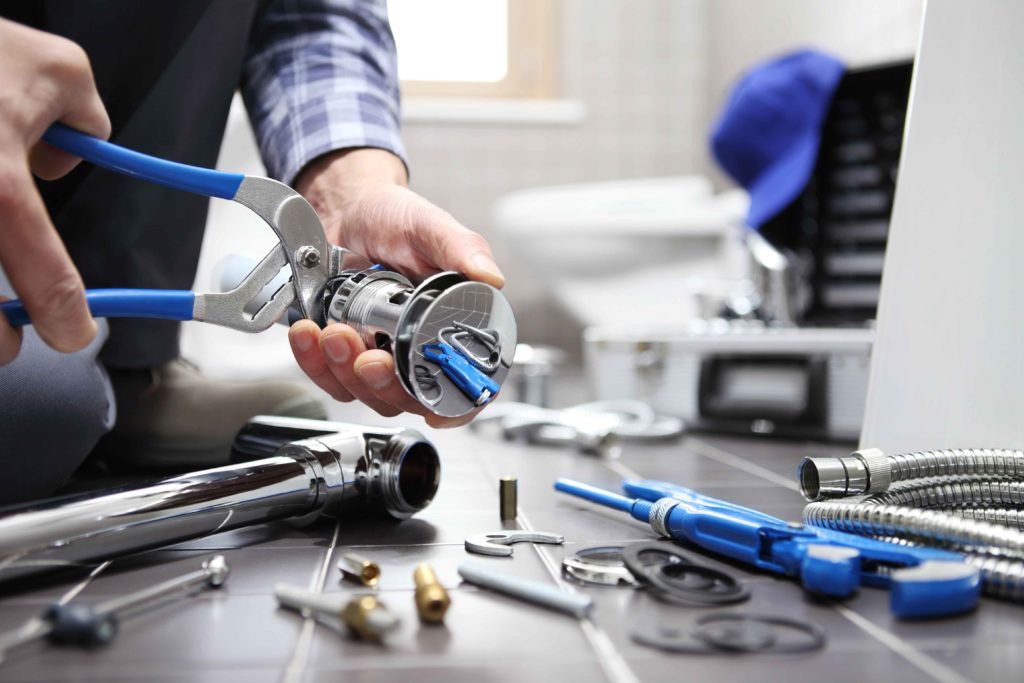They are making a few great annotation about Why Are My Faucets Dripping (And Can I Fix It Myself)? as a whole in this post down below.

Dripping faucets may look like a small inconvenience, however their effect surpasses just the annoyance of the noise. From wasting water to sustaining unnecessary monetary costs and wellness dangers, ignoring a dripping tap can bring about numerous consequences. In this write-up, we'll delve into why it's critical to address this common family problem without delay and successfully.
Wastefulness of Water
Ecological Impact
Leaking taps contribute dramatically to water wastefulness. According to the Environmental Protection Agency (EPA), a single tap trickling at one drip per second can lose greater than 3,000 gallons of water each year. This not just strains water resources but also affects environments and wildlife based on them.
Step-by-Step Overview to Dealing With a Dripping Tap
Tools Required
Prior to trying to take care of a trickling tap, gather the essential devices, consisting of a flexible wrench, screwdrivers, replacement components (such as washers or cartridges), and plumber's tape.
Common Faucet Issues and Their Solutions
Recognize the sort of faucet and the certain issue causing the drip. Common problems consist of damaged washing machines, corroded valve seats, or damaged O-rings. Refer to supplier guidelines or online tutorials for detailed support on fixings.
Financial Expenses
Increased Water Costs
Past the environmental effect, trickling faucets can pump up water expenses substantially. The gathered waste with time converts into higher utility costs, which could have been prevented with prompt repair services.
Prospective Building Damage
In addition, long term leaking can bring about damage to components and surfaces bordering the tap. Water accumulation can create staining, corrosion, and even structural issues if left neglected, causing extra fixing expenses.
Health and wellness Issues
Mold And Mildew and Mold Growth
The constant existence of wetness from a dripping faucet creates an ideal setting for mold and mildew and mildew growth. These fungi not just endanger interior air top quality but also pose wellness dangers, particularly for individuals with respiratory conditions or allergies.
Waterborne Illness
Stagnant water in leaking taps can come to be a breeding place for germs and other microorganisms, enhancing the risk of waterborne conditions. Pollutants such as Legionella microorganisms flourish in stationary water, possibly bring about significant ailments when ingested or inhaled.
Do it yourself vs. Professional Repair
Benefits and drawbacks of Do It Yourself Repair
While some may attempt to repair a dripping tap themselves, do it yourself fixings include their very own collection of difficulties. Without appropriate knowledge and devices, do it yourself attempts can intensify the issue or result in incomplete repair work, extending the trouble.
Benefits of Employing a Professional Plumber
Employing a specialist plumber makes sure that the underlying cause of the leaking faucet is addressed effectively. Plumbers possess the know-how and devices to identify and repair tap problems efficiently, saving time and reducing the threat of more damage.
Ecological Obligation
Specific Contribution to Conservation
Taking responsibility for taking care of dripping faucets aligns with wider initiatives towards water preservation and environmental sustainability. Every individual's activities collectively make a significant effect on preserving precious sources.
Sustainable Living Practices
By prioritizing timely repair work and embracing water-saving practices, individuals contribute to sustainable living techniques that profit both existing and future generations.
Safety nets
Normal Maintenance Tips
To avoid leaking taps, do regular maintenance such as cleansing aerators, evaluating for leakages, and changing worn-out components quickly. In addition, think about installing water-saving gadgets or upgrading to much more effective fixtures.
Significance of Prompt Repair Works
Addressing leaking faucets as quickly as they're noticed protects against further water waste and prospective damage, inevitably saving both water and money in the long run.
Influence On Home Worth
Perception of Well-Maintained Residential Or Commercial Property
Maintaining a building in good condition, consisting of addressing upkeep problems like dripping faucets, boosts its perceived value and desirability amongst possible purchasers or lessees.
Impact on Resale Worth
Residences with properly maintained plumbing components, including taps, command higher resale worths in the property market. Resolving leaking taps can contribute to a positive impression during residential or commercial property evaluations and arrangements.
Verdict
Attending to a dripping faucet surpasses plain comfort; it's an important action towards conserving water, reducing monetary costs, and guarding wellness and building. Whether via DIY repair services or professional support, taking action to repair leaking faucets is a small yet impactful means to advertise accountable stewardship of sources and contribute to a healthier, extra lasting future.
Why Are My Faucets Dripping (And Can I Fix it Myself)?
Causes of a Dripping or Leaking Faucet
Whether you’re hearing drops of water falling and hitting a sink, or noticing water ooze out from the base of the spout, you shouldn’t ignore a dripping or leaking faucet. And, the good news is, sometimes you can fix the problem yourself.
In this article, we’ll review a few common causes of dripping and leaky. We’ll also walk you through some basic ways to find the problem and handle it without calling anyone — and let you know when to call in a pro.
But, no matter what the cause, or whether you can handle it on your own, the sooner you address it, the better.
Each drip may be a tiny amount of water. But, they all add up quickly. According to the U.S. Geological Survey, one faucet losing one drop every 20 seconds — five a minute — wastes around a liter of water every day, and 173 gallons a year.
Add in more than one in your house, and it’s a lot of water to waste. So, we’ll help you get to the bottom of things quickly.
Four Reasons Your Faucet May Be Dripping
- Aerator is Damaged or Unseated
- Valve Seat is Corroded
- O Ring is Loose or Worn Out
- Part of the Assembly is Loose
Aerator is Damaged or Unseated
If you unscrew the end of your faucet, you’ll find the aerator. It’s the little stem piece with a screen on it that shuts off the water circulation.
If it’s damaged, or if it’s not sitting right, it will allow water to pass through.
Valve Seat is Corroded
Next is the valve seat, which is connected to the washer. If the washer wasn’t in place correctly, then it could have ground against the seat. Over time, this damages the valve seat.
The problem could also be corrosion: Over time, the part has worn out, and it’s now allowing water to pass through.
O Ring is Loose or Worn Out
Since the o ring is only a small rubber gasket, it’s a common reason why the faucet is dripping. You’ll find it at the base of the faucet, and it’s there to keep water from coming out where it’s not supposed to.
However, it’s common for the o ring to wear out over time. When it does, you’ll notice a drip.
Part of the Assembly is Loose
So far, we’ve looked at a few small, specific parts. But, the problem could be anywhere in the assembly if something’s out of place.
Even if a part isn’t damaged, over time, it may have become loose or dislodged. It could be the parts we mentioned, or the aerator at the tip of the faucet, the stem itself,
Can I Fix a Leaky Faucet Myself?
Depending on the problem, and how handy you are, there’s a chance you can fix a leaky faucet without calling a professional. But, you do run the risk of making the problem worse.
If it’s a small drip, you can certainly try a few troubleshooting tactics. We’ll walk you through them in a moment.
But, no matter what, your first step should be shutting off the water coming into the faucet. You should find a shutoff valve under the sink on the pipes leading to it. Turn each one clockwise until they close tightly.
Next, make sure you have the right tools for whatever you’re attempting. It’s tempting to make do with what you have. But, you need the right ones for a reason: You’re often dealing with small parts that can break if you handle them carelessly.
If you’re feeling confident, here are some places to start.
Items Near the Tip of the Faucet
A few of the parts we mentioned — particularly the valve seat and washer — are located at the tip of the faucet where the water comes out. They’re easy to access, making it a good place to start.
Check the O Ring
To check the o ring, you’ll need to take off the spout at the base. It’s easiest on kitchen sinks with long spouts, versus the smaller, bulkier base on most bathroom sinks.
Either way, this can be tricky, so do it carefully and don’t force anything. If it’s not coming right off, you’re much better off calling in a pro than possibly breaking something.
For a kitchen sink, there’s usually a nut or coupling assembly at the base of the spout. These often slide off easily without using any tools.
Once you’ve disassembled those parts, gently but forcefully twist off the spout.
Then, you can see the o rings. There should be two of the rubber gaskets on the base. If they look worn or damaged, replace them, and see if that solves the problem.

I recently found that write up on How to Fix a Dripping or Leaky Faucet while looking around the search engines. Liked our piece of writing? Please quickly share it. Help others find it. Thanks a lot for taking the time to read it.
Comments on “Why It's Essential to Mend a Leaking Faucet”